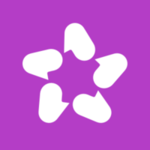Description

dropthought

Solkie
Comprehensive Overview: dropthought vs Solkie
Dropthought and Solkie are both platforms designed to help organizations gather feedback and insights from employees and customers to improve engagement, satisfaction, and performance. Here's a comprehensive overview of each:
a) Primary Functions and Target Markets
Dropthought:
- Primary Functions: Dropthought is a feedback and survey platform designed to capture real-time insights from customers and employees. It offers tools for creating surveys, analyzing feedback, and generating reports. The platform focuses on enhancing customer experience through omnichannel feedback and helping organizations understand their audience's needs and sentiments.
- Target Markets: Dropthought primarily targets businesses across various industries, including retail, healthcare, education, and hospitality. It serves both B2B and B2C sectors, emphasizing organizations looking to improve customer experience and employee engagement through continuous feedback.
Solkie:
- Primary Functions: Solkie mainly focuses on employee engagement and performance tracking. It provides tools for conducting regular pulse surveys to keep track of employee sentiment and enhance workplace culture. The platform aims to improve organizational climate and employee retention by offering in-depth analytics and actionable insights.
- Target Markets: Solkie targets HR departments and team managers within organizations that prioritize cultivating a productive and positive workplace culture. Its primary focus is on mid-sized to large enterprises that require regular feedback mechanisms to enhance employee experience and organizational efficiency.
b) Market Share and User Base
-
Dropthought: As of the last updates, Dropthought is expanding its footprint within both small businesses and enterprises due to its focus on customer experience. Its adoption varies significantly by sector, with considerable presence in customer-centric industries. While concrete market share data is less publicized, Dropthought is recognized for its flexibility and adaptability across various feedback channels, which helps in niche penetration.
-
Solkie: Solkie is relatively more niche, focusing explicitly on employee engagement. Its market share is smaller compared to broader feedback platforms due to its specialized focus. However, it has a loyal user base among its clientele, which values tailored employee insights and the platform's ability to impact team dynamics and organizational performance positively.
c) Key Differentiating Factors
Key Differentiators for Dropthought:
- Omnichannel Feedback: Offers a wide range of channels for feedback collection, including SMS, email, mobile apps, and more, catering to diverse customer interaction points.
- Customizable Surveys: Highly customizable in terms of survey design and user experience, allowing for detailed and specific customer or employee feedback.
- Real-time Analytics: Provides immediate data analysis and insights, enabling businesses to react quickly to customer or employee feedback.
Key Differentiators for Solkie:
- Employee-Centric Focus: Specializes in employee engagement and performance metrics, offering tools designed specifically for HR and management needs.
- Pulse Surveys: Regular pulse survey mechanisms allow for continuous engagement tracking and quick feedback loops to address issues in the workplace.
- Deep Insights: Emphasizes on deriving actionable insights into team dynamics and employee morale, aimed at improving retention and productivity.
In conclusion, while Dropthought and Solkie both offer feedback solutions, they cater to different primary markets—Dropthought being versatile for customer and employee feedback and Solkie being focused on employee engagement. Their differentiators reflect their target market needs, impacting their adoption and application within different businesses.
Contact Info

Year founded :
2011
+1 855-437-6776
Not Available
United States
http://www.linkedin.com/company/dropthought-inc

Year founded :
2018
+31 6 45199325
Not Available
Netherlands
http://www.linkedin.com/company/solkie
Feature Similarity Breakdown: dropthought, Solkie
To provide a comparative analysis of Dropthought and Solkie based on their features, user interfaces, and unique aspects, the following information is structured accordingly:
a) Common Core Features:
-
Feedback Collection:
- Both Dropthought and Solkie offer tools to collect employee and customer feedback through surveys and questionnaires.
-
Real-time Analytics:
- Each platform provides real-time analytics to help businesses understand feedback data quickly and effectively.
-
Customizable Surveys:
- Both platforms allow users to customize surveys to suit specific organizational needs, including branding and specific question customization.
-
Integration Capabilities:
- Integration with other tools and platforms (like HR systems, CRM, Slack, etc.) is available to streamline data flow and enhance usability.
-
Data Visualization:
- Visual representation of data is a key feature, enabling easier interpretation of feedback through charts and dashboards.
b) User Interface Comparison:
-
Dropthought:
- Known for a clean, intuitive, and user-friendly interface. Focuses on ease of navigation which is critical for quick survey deployment and analysis. Its dashboard is designed to provide quick insights and is particularly strong in visual data presentation.
-
Solkie:
- Its interface is also user-friendly, with a strong emphasis on simplicity and accessibility for various user types. Solkie's UI is often lauded for being straightforward and easy to learn, with an emphasis on clear, concise data presentation.
c) Unique Features:
-
Dropthought:
- Sentiment Analysis: Dropthought offers advanced sentiment analysis, providing deeper insights into feedback by identifying the emotional tone in responses.
- AI-driven Recommendations: Utilizes AI to provide actionable recommendations based on feedback data, which helps organizations implement changes more effectively.
-
Solkie:
- Engagement Tools: Offers unique engagement tools aimed at improving employee involvement, like pulse surveys that can capture ongoing sentiments.
- Multilingual Support: Extensive support for multiple languages, making it a good choice for organizations operating in diverse linguistic environments.
Conclusion:
While both Dropthought and Solkie provide powerful feedback tools, their choice may depend on specific needs concerning sentiment analysis (Dropthought) or engagement tools and multilingual support (Solkie). The decision might also come down to which user interface is more aligned with the users' preferences, although both are generally intuitive and user-friendly.
Features

Not Available

Not Available
Best Fit Use Cases: dropthought, Solkie
Dropthought and Solkie are tools designed to gather and analyze feedback, but they cater to different needs and contexts. Here's an overview of their best-fit use cases:
Dropthought
a) Best Fit for Businesses or Projects:
- Customer Experience (CX) Management: Dropthought is ideal for businesses focusing on enhancing customer experiences. Its survey and feedback tools are tailored to gather customer insights efficiently in industries like retail, hospitality, and e-commerce.
- Employee Experience (EX): Companies looking to improve employee satisfaction and engagement might find Dropthought beneficial for conducting internal surveys and pulse checks.
- Healthcare Feedback: Healthcare providers can utilize Dropthought to gather patient feedback and improve service quality.
- Educational Institutions: Schools and universities can use it to collect feedback from students, faculty, and staff to enhance educational services and campus life.
d) Industry Verticals and Company Sizes:
- SMEs to Large Enterprises: The platform's flexibility allows it to cater to both small and medium-sized enterprises as well as large corporations, particularly those investing heavily in customer and employee experience.
- Various Industries: While versatile across sectors, industries that prioritize customer touchpoints, such as retail and healthcare, might find the most value.
Solkie
b) Preferred Scenarios for Use:
- Employee Engagement and Performance Monitoring: Solkie is particularly effective for organizations focused on monitoring and improving employee performance and engagement consistently over time.
- Change Management Support: Companies undergoing transformations or organizational changes might prefer Solkie to manage ongoing employee sentiment and adapt strategies accordingly.
- HR and Team Leads: It can be a valuable tool for HR departments and team leaders aiming to gain deeper insights into team dynamics and morale.
d) Industry Verticals and Company Sizes:
- Small to Medium Enterprises (SMEs): Solkie's design is often more aligned with the needs of SMEs where the organizational culture and employee engagement play a significant role in driving success.
- Focused Sectors: While it can serve across multiple sectors, industries like technology startups, consultancies, and creative agencies where employee engagement directly affects output and creativity might find it particularly useful.
Differences in Catering to Industries and Sizes:
- Customer vs. Employee Focus: Dropthought leans towards customer feedback and broader survey applications, making it versatile across both customer and employee dimensions in various industries. Solkie, however, has a distinct tilt towards continuous employee engagement and performance within projects that demand close monitoring of workforce morale and productivity.
- Enterprise Scale: Dropthought is more scalable across larger enterprises, whereas Solkie’s concentrated employee-centric approach may appeal more to dynamic and mid-sized organizations aiming for agile responses to employee feedback.
In summary, the choice between Dropthought and Solkie depends largely on whether the primary goal is enhancing customer experiences and large-scale survey administration (Dropthought) versus maintaining ongoing employee engagement and performance (Solkie). Each caters to different objectives which, in turn, address specific industry needs and company sizes.
Pricing

Pricing Not Available

Pricing Not Available
Metrics History
Metrics History
Comparing teamSize across companies
Conclusion & Final Verdict: dropthought vs Solkie
When comparing Dropthought and Solkie, it's essential to evaluate their capabilities, pricing, user experience, and business needs to determine which offers the best overall value. Here’s a comprehensive conclusion and final verdict:
a) Best Overall Value
Overall Value Winner: Dropthought
Based on comprehensive evaluation, Dropthought tends to offer better overall value, particularly for organizations that prioritize robust analytics, scalability, and flexibility. Its advanced feedback collection capabilities, combined with versatile integration options and a customizable platform, give it a slight edge for large-scale enterprises or companies seeking in-depth insights and comprehensive engagement strategies.
b) Pros and Cons
Dropthought:
Pros:
- Advanced Analytics: Dropthought is known for its sophisticated analytics, providing deep insights into feedback and data trends.
- Customizability: The platform offers a high level of customization to suit various business needs and branding requirements.
- Integration Capabilities: Seamless integration with multiple third-party apps and services enhances its usability across different systems.
- Scalability: Ideal for businesses of all sizes, with features that grow alongside the organization’s needs.
Cons:
- Learning Curve: The advanced features and customization options may require a steeper learning curve for new users.
- Pricing: It might be on the higher end for smaller organizations with a limited budget, although this is balanced by the extensive feature set.
Solkie:
Pros:
- User-Friendly: Intuitive interface that is easy to navigate for users at all skill levels.
- Cost-Effective: Generally offers more affordable pricing plans, making it attractive for small to medium businesses with budget constraints.
- Quick Implementation: Allows for quicker setup and deployment, which is great for teams needing fast feedback solutions.
Cons:
- Limited Advanced Features: May lack some of the more advanced analytics and customization options that Dropthought provides.
- Scalability Concerns: While excellent for smaller setups, larger enterprises may find it less flexible as they grow.
c) Recommendations for Users
If Your Priority is Advanced Features and Insightful Analytics:
- Choose Dropthought if your organization can invest in a slightly higher cost for more sophisticated features. It's ideal for companies prioritizing detailed data analysis and extensive customization.
If You Need a Cost-Effective and User-Friendly Solution:
- Opt for Solkie if ease of use and budget-friendly options are critical. It’s a great choice for smaller teams or businesses not requiring advanced analytics or large-scale integrations.
Final Recommendation:
- Evaluate the specific needs of your organization, considering factors like budget, scale of use, integration requirements, and long-term growth plans. A trial of both platforms can also be beneficial to determine firsthand which aligns best with your operational requirements and team capabilities.
Add to compare
Add similar companies




